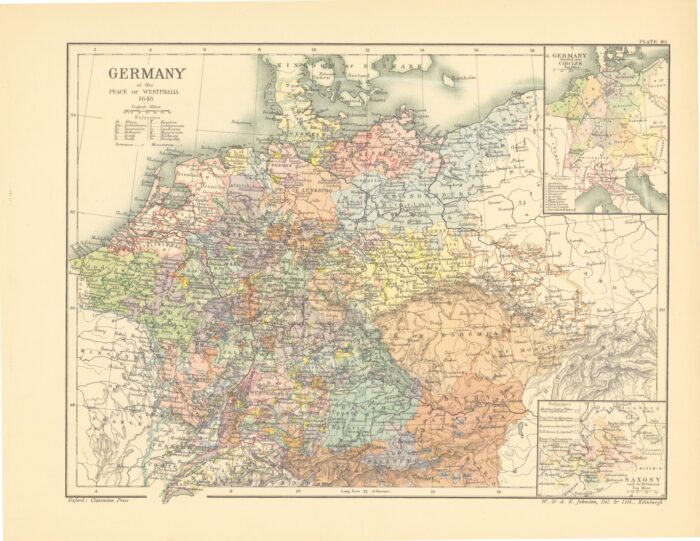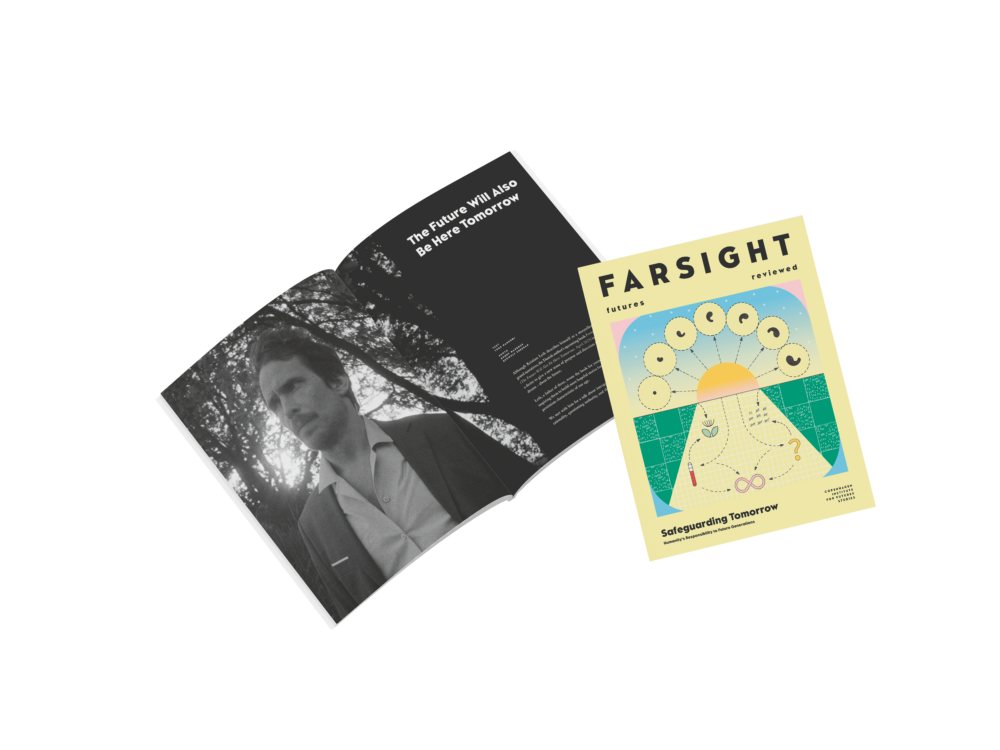
In turn, we use cookies to measure and obtain statistical data about the navigation of the users. You can configure and accept the use of the cookies, and modify your consent options, at any time.

Science Fiction as a Futurist Tool
By playing into our subconscious hopes and fears, envisioning utopian and dystopian
futures helps us better understand where we are today,
and where we want to go tomorrow.
Through the medium of science fiction, we are transported to strange and foreign worlds that are distorted mirrors of today’s world or visions of possible futures, good or bad. The science fiction visions that resonate most with us tap into our conscious and subconscious desires and anxieties about the future. For this reason, popular science fiction in books, on TV, and in movies can tell us much about what exactly these hopes and fears are. In this way, examining utopian and dystopian science fiction visions – and science fiction in general – can be used as a futurist tool.
Utopias and dystopias are fictional visions of societies that are portrayed as being significantly better or worse than today’s world. Utopias and dystopias are generally, but not always, placed in the future, whereby they become explicit hopes for or warnings of what might happen. They often exaggerate or expand on trends seen today and tell us what benefits or horrors these trends could give birth to. Future visions need not be realistic to spark such hopes and fears; for instance, being gripped by a tale of a zombie apocalypse may reflect a deep-rooted fear of social dehumanisation or of an uprising of “the great unwashed” – or it could reflect a hope for more tangible and combatable evils than those which plague us today. Similarly, a fantasy featuring elves living in elegant buildings in harmony with nature may reflect hopes of our own society becoming more like that, even if we can’t become elves. Fictional futures can serve as explicit or implicit warnings of paths we should not take, or suggestions for desirable paths we could take (according to the writer), and hence also serve as political commentary on present trends; but they can also simply be worlds that work differently from ours, and hence make us question things we take for granted today by showing possible alternatives and thereby making us reassess the choices we have made.

Broaden your horizons with a Futures Membership. Stay updated on key trends and developments through receiving quarterly issues of FARSIGHT, live Futures Seminars with futurists, training, and discounts on our courses.
BECOME A FUTURES MEMBERA utopian vision like the one we see in Star Trek lets us imagine that we can achieve a bright society free of poverty, oppression and intolerance, with authorities that serve all people based on lofty ideals about freedom, equality and cultural respect, where every man or woman (or whatever) can become their own best self, no matter what their race or background. It may not be a perfect world – many Star Trek stories centre around dilemmas that have no easy solutions, and there are examples of corrupt officials – but the overall system strives to do the best it can, and, ultimately, it usually manages to solve any serious problem. Star Trek is a totally realistic world. Technologies like faster-than-light travel, artificial gravity, solid holograms and matter transporters are still beyond all but the most hypothetical physics, though other technologies like replicators, androids, and universal translators may soon become practical reality. But the realism of the setting is not all that important; what matters is that Star Trek shows us a world that most of us perceive as better than the one we live in, maybe inspiring us to change our world today to become more like that.
The flip side of the coin, the dystopian visions seen in, for example, Robocop, The Terminator, Blade Runner, Hunger Games, Gattaca, The Day After Tomorrow and The Handmaid’s Tale, warn us of dangerous missteps we could take on our road to the future if we are not careful, whether it is technology run amuck, extreme inequality, catastrophic climate change or religious oppression.
As with utopias, dystopian visions need not be realistic to represent real fears. Climate change is unlikely to happen as rapidly and brutally as shown in The Day After Tomorrow, but the fear of climate change is real. It may not be realistic that future robots will decide to take over the world, as in The Terminator or I, Robot, but the fact that such visions speak to us highlights our fear of future technology running out of control. Or, perhaps less obviously, the robots in The Terminator might represent our fear that inhuman corporations will destroy the world, following their own agendas without thought for the human cost (totally unrealistic, of course).
As we can see from the above, science fiction visions should not always be taken at face value. There may be deeper meanings relevant for today, whether or not the writer consciously sought to imply such meanings. H. G. Wells did not write The War of the Worlds as a warning about invasions from Mars, but rather as criticism of the colonial actions of the British Empire of which he was a part; a criticism that has been lost on many readers and in most adaptations. On the other hand, Ray Bradbury stated that he wrote Fahrenheit 451 as a criticism of television and was surprised that people saw it as a warning about censorship. The allegorical nature of the work allows both views, and this is the strength of science fiction: it doesn’t necessarily tell you what to think, but rather leaves it up to you to draw whatever parallels you want. This power of allegory is even stronger in science fiction’s sister genre, fantasy. The dark forces in Tolkien’s The Lord of the Rings can be seen to represent fascism, and indeed, Tolkien wrote an early draft of the story as letters to his son who served in Africa during World War II; but a deeper reading of the story indicates an unspoken criticism of industrialisation and the cost of progress (loss of beauty and wonder is a recurring theme). When examining a fictional future or fantasy setting, it is hence important to be aware of both explicit and implicit themes that can be read from it.
There are several ways that science fiction utopias and dystopias can be used as tools in futures studies. The most obvious is that futurists should be aware of a wide selection of popular utopian and dystopian future visions, both for the insights the imagined future scenarios can give and because the popularity of the works means that they can be used as a shorthand for describing the possible effects of trends. Whenever a new technology allows more surveillance, George Orwell’s Nineteen Eighty-Four is brought up as a possible consequence, and proposed restrictions on contraception and abortion make us think of The Handmaid’s Tale.
Utopias and dystopias can also be used in workshop exercises. A selection of future visions relevant to the subject of the workshop may be shown through text excerpts or short video clips. For vision, participants are asked questions like “What are the themes presented here?”, “What hopes and fears of today do they represent?”, “What does that tell us about today’s citizens, consumers, and employees?”, “What future innovations – in technology, services, fashion, leisure or social and cultural norms – are presented here?”, “What relevant and useful innovations could you create today with this as inspiration?” In this way, the popular works of fiction provide anchor points for discussing future trends and their possible consequences, and they can provide useful inspiration that is immediately actionable.
In another workshop exercise, participants create their own utopias and dystopias. The person running the workshop asks the participants to imagine the best (utopian) and the worst (dystopian) futures that could derive from extending a selected trend or technology and then imagining what steps and events could lead to these futures. Comparing the imagined paths to the two scenarios can be used to create a roadmap of events or decisions that could bring about one or the other possible future. The workshop can then discuss whether the utopian vision really is utopian – e.g. might there be some more-or-less obvious pitfalls or undesirable side effects? – and whether the dystopian vision really is dystopian – e.g. does it reflect irrational fears or obsolete morals, ethics, or structures rather than anything we should rationally fear?
Fictional utopias and dystopias can also serve as tools in brainstorming on a certain subject or theme. First, the participants silently brainstorm about how this subject or theme has been treated in popular utopias, dystopias or other stories. Then, the participants in turn present such a story and how it treats the subject or theme, after which the group discusses how this might pertain to the current issue or project. After the discussion, useful thoughts and ideas are collected and organised for clarity and presentation.
Fictional portrayals of the future – whether utopian, dystopian or merely entertaining – usually showcase imagined future products, services, social innovations or other ideas. Presenting a number of these could inspire real-world applications. The communicators shown in the original Star Trek series inspired the flip-top mobile phones of the 2000s. In the 1990 movie Total Recall, Arnold Schwarzenegger’s character takes a ride in a robot taxi, ‘Johnny Cab’, and though the scene is rather silly, it might well have inspired more realistic ideas of a robot taxi service. The ‘hoverboard’ in Back to the Future Part II has inspired many attempts to create something similar, and the word has become a common term for a self-balancing scooter, even if it doesn’t actually hover. A future internet application called ‘Earth’ in Neal Stephenson’s popular 1992 novel Snow Crash allegedly inspired Google Earth, and the ‘Metaverse’ from the same book inspired the popular first-person shooter game Quake, the online world Second Life and Xbox Live. In general, reading or watching science fiction is a good way to be exposed to fictional worlds that are different from the one we live in. The great adaptability of humans has been important for our survival as a species, but it has also made us liable to adapt to less than ideal conditions.
Kids growing up in war zones adapt to war and often find it hard to let go of combat after the war is over. Women adapt to abusive relationships to the extent that they may consider it normal. People growing up in a fundamentalist, communist or capitalist society may take these for granted and become oblivious to alternatives or consider such alternatives inherently evil. For this reason, exposing yourself to science fiction’s visions of different worlds may make you see the flaws of the one you live in reflected in the exaggerations of a dystopian vision, or a utopian vision may make you question the ideals, ethics and priorities of today’s world. In this way, science fiction becomes a useful part of achieving futures literacy.